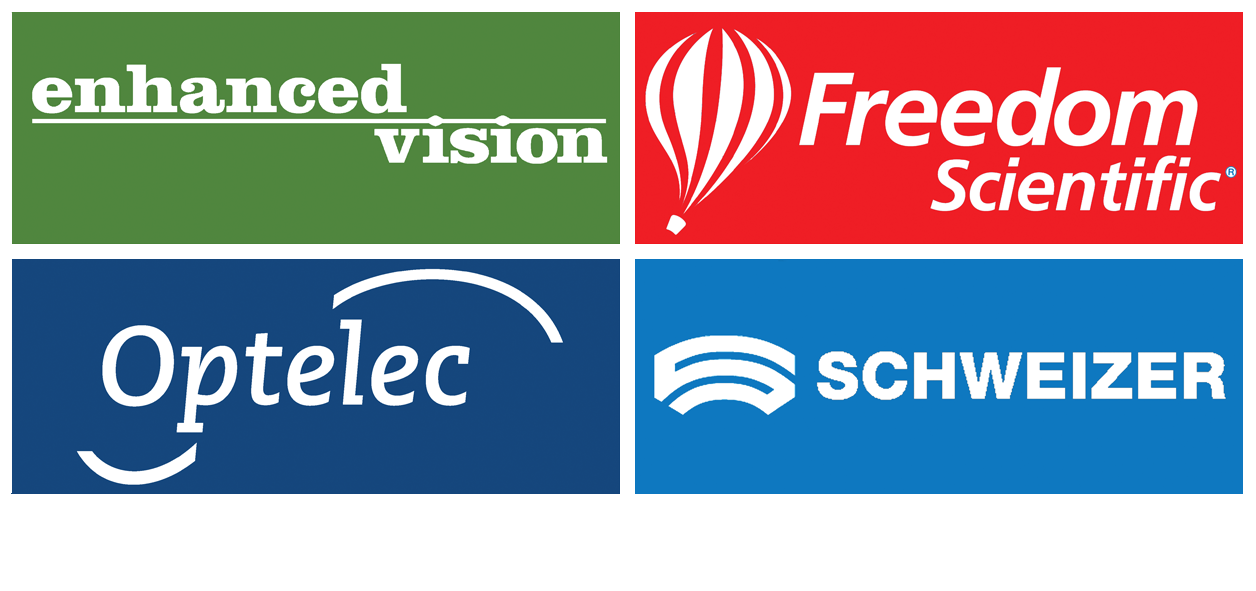
What is Nystagmus
Introduction
Nystagmus is a condition that might not be widely known, but for those who experience it, the impact on vision can be profound. Characterised by involuntary eye movements, Nystagmus can make the world seem like it's constantly in motion. For individuals navigating the options for low vision aids, understanding Nystagmus is crucial. This article aims to demystify this eye condition, exploring its causes, symptoms, treatment options, and the latest research. Whether you're personally affected by Nystagmus or supporting someone who is, gaining insight into this condition is the first step toward better management and enhanced quality of life.
Understanding Nystagmus
Nystagmus is a unique eye condition where the eyes move involuntarily. This movement can be side to side, up and down, or in a circular motion. Imagine trying to focus on a page in a book while it's gently being moved back and forth; that's somewhat akin to the visual experience of someone with Nystagmus. This involuntary eye movement can make static objects appear to sway or wobble, which can significantly impact clarity and focus.
This condition can be present at birth, known as congenital Nystagmus, or develop later in life, referred to as acquired Nystagmus. The severity and impact on vision can vary widely among individuals. Some may experience only minor disturbances, while others might find day-to-day activities, like reading or driving, more challenging.
Understanding Nystagmus is the first step in seeking the right support and aids, especially for those exploring options to enhance their vision. By recognising the unique challenges it presents, individuals can better navigate the resources available to them.
Causes of Nystagmus
Nystagmus can stem from a variety of causes, ranging from genetic factors to medical conditions. Understanding these causes is crucial for diagnosis and treatment. Here are some of the primary causes:
Genetic Factors: Congenital Nystagmus often runs in families, suggesting a genetic component to this condition.
Neurological Conditions: Issues with the brain or central nervous system, such as multiple sclerosis or a brain injury, can lead to acquired Nystagmus.
Inner Ear Problems: The inner ear plays a key role in balance and eye movements. Conditions affecting this area can cause Nystagmus.
Medication Side Effects: Certain medications, especially those affecting the central nervous system, can induce Nystagmus as a side effect.
Albinism: This genetic condition, characterised by a lack of pigment in the skin, hair, and eyes, can be associated with Nystagmus.
Other Eye Conditions: Conditions that affect vision from birth, like cataracts or strabismus, may also lead to Nystagmus.
It's important to note that sometimes the exact cause of Nystagmus remains unknown. A thorough medical examination can help identify potential underlying causes and guide treatment options.
Recognising the Symptoms of Nystagmus
The symptoms of Nystagmus can vary significantly from one individual to another, affecting daily life in different ways. Here are some common symptoms associated with this condition:
Uncontrolled Eye Movements: The hallmark of Nystagmus, these movements can be horizontal, vertical, or circular and may affect one or both eyes.
Blurry Vision: Due to the constant movement of the eyes, individuals with Nystagmus often experience a general blurriness in their vision.
Difficulty with Depth Perception: Unsteady eye movements can make judging distances and depth challenging.
Sensitivity to Light: Many people with Nystagmus find bright lights uncomfortable or even painful, leading to a preference for dimmer environments.
Head Tilting: Some individuals adopt a head tilt or turn to see more clearly, known as the "null point," where the eye movements are less pronounced and vision is improved.
Challenges in Reading and Driving: Tasks that require steady, focused vision, such as reading or driving, can be particularly difficult.
Understanding these symptoms is crucial for adapting to daily life with Nystagmus. Recognising the challenges can help in seeking appropriate support and accommodations.
Treatment Options for Nystagmus
While there is currently no cure for Nystagmus, there are various treatments and strategies that can help manage its symptoms and improve quality of life. Here's an overview of the available options:
Glasses and Contact Lenses: While they may not correct Nystagmus itself, corrective lenses can improve vision affected by refractive errors like nearsightedness or astigmatism, which often accompany Nystagmus.
Prisms: Prisms can be added to glasses to reduce double vision or the need for head tilting, helping to find a more comfortable viewing position.
Medications: In some cases, certain medications can help reduce the severity of eye movements.
Surgery: Surgical options may be considered to correct abnormal head positions or improve eye alignment. However, surgery typically doesn't stop the eye movements.
Vision Therapy: Although not a cure, vision therapy may help improve visual skills and reduce symptoms.
Low Vision Aids: Magnifiers, specialised software, and devices designed for low vision can assist in daily tasks, making reading and navigating environments more manageable.
It's important for individuals with Nystagmus to work closely with eye care professionals to determine the most effective treatment plan tailored to their specific needs and lifestyle.
Latest Research and Developments in Nystagmus
The field of Nystagmus research is continually evolving, with scientists and medical professionals working towards better understanding and treatment options. Here's a glimpse into some of the latest advancements:
Gene Therapy: With Nystagmus often having genetic roots, gene therapy presents a promising avenue for treatment. Researchers are exploring ways to correct or mitigate the genetic anomalies that contribute to Nystagmus.
Neurological Research: Studies focusing on the brain's role in controlling eye movements are shedding light on potential neurological interventions that could stabilise eye movements in Nystagmus patients.
Advanced Diagnostic Tools: Improved imaging and diagnostic techniques are enabling earlier and more accurate diagnoses of Nystagmus, which is crucial for effective management.
Wearable Technology: Innovations in wearable tech, such as glasses equipped with stabilising technology, are being explored to help counteract involuntary eye movements and improve vision.
These developments offer hope for individuals with Nystagmus, indicating a future where more effective treatments and perhaps even cures might be available.
Conclusion
Nystagmus, with its involuntary eye movements and accompanying challenges, can significantly impact daily life. Yet, understanding this condition, recognising its symptoms, and exploring available treatment options can empower those affected to lead fuller lives. While there's currently no cure, advancements in medical research and technology offer hope and practical solutions for managing symptoms.
For anyone navigating life with Nystagmus, it's crucial to stay informed about the latest research and developments. Collaboration with eye care professionals can help tailor a management plan that maximises vision and quality of life. Whether through corrective lenses, surgical options, or adaptive technologies, there are resources available to support those with Nystagmus.
Embracing a proactive approach, seeking support, and leveraging available treatments can make a significant difference. The journey with Nystagmus may have its challenges, but with the right strategies and support, individuals can navigate their world with confidence.


